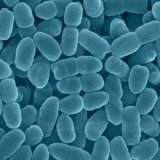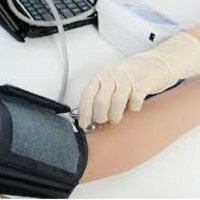Symptoms, whooping cough

Pertussis is a very dangerous bacterial respiratory infection. This disease is the most common childhood infection.
The causative agent of pertussis is the bacterium( pertussis), which in medicine is called bordetella( Bordetella pertussis).Such a bacterium is very unstable and the time of its existence is insignificant, therefore in the external environment it dies instantly. The source of infection is an extremely sick person throughout the period of the disease.
Absolutely all people are very susceptible to whooping cough. If a person has weak immunity, then the probability of catching a bacterium after contact with a patient with pertussis reaches 100%.The disease is transmitted by airborne droplets. Symptoms of whooping cough differ, primarily from the stage of the disease, but throughout the disease the most important sign of whooping cough is a paroxysmal cough. This cough practically does not give in to treatment. Pertussis wand spreads when the infected person coughs. The causative agent of whooping cough is scattered by two to three meters. Only with direct contact with an infected person can you pick up a pertussis wand. This can happen during a normal conversation or game.
It is not uncommon for a child's parents to get sick. But in adults, the illness proceeds slightly in a different form than in children. As a result of the conducted studies it was found out that in the family of a sick child, an adult was coughing for a long time.
Even a newborn can get sick with whooping cough, as the innate immunity, determined by the maternal antibodies, does not develop. But after the transferred or carried disease the proof enough proof immunity which is kept during all life is developed.
First of all, whooping cough is dangerous for children under two years old. On average, the incubation period of this disease lasts from five to nine days, but can range from three to twenty days.
Symptoms of whooping cough at each stage of the disease
The disease lasts about six weeks and is divided into three stages:
- catarrhal( prodromal);
- paroxysmal;
- stage of recovery.
The catarrhal stage lasts from one to two weeks. At this stage of the disease there is a slight runny nose, dry, but frequent coughing, body temperature rises unimportantly, and may even remain at normal level. It is almost impossible to suspect that a person has fallen ill with pertussis. Most often, doctors put the patient diagnosed with ARI or bronchitis. Therefore, treatment of pertussis at this stage is inadequate.
After the disease passes into the paroxysmal stage. It lasts up to two, up to three months. This stage is often called the stage of spasmodic cough, since cough becomes paroxysmal. It is at the paroxysmal stage that it acquires quite noticeable features. Therefore, in order to establish a correct diagnosis at the paroxysmal stage, the doctor only needs to hear a cough.
From the fourth week of illness, the infected person enters the recovery stage. All obvious symptoms begin to disappear. Treatment often comes down to eating vitamin.
The course of the disease
In the first stage of the disease( catarrhal) in most cases the patient does not have temperature, and he continues to communicate with others. So the infection spreads. An infected person secretes microbes for almost a whole month. Gradually, the cough begins to progress and become paroxysmal. Coughing attacks are especially obvious at night. So the catarrhal stage of the disease passes into the paroxysmal stage.
As noted earlier, it is at the paroxysmal stage that a cough is an attack that consists of several coughing shocks. Most often this is a series of five to fifteen fast coughing thrusts, one after another. Such a cough does not provide an opportunity to rest. After the attack ends, the patient takes a deep breath, which is characterized by a very peculiar whistling sound. Then the patient becomes slightly lighter, but, unfortunately, this lasts only for a short time and he is again visited by a fit of coughing. During an attack, a significant amount of mucous glassy sputum is released, which can result in vomiting. Most often it occurs with vomiting or at the end of an attack. At an attack the patient blushes or at all turns blue.
At the stage of recovery, coughing practically disappears. The patient begins to feel much better.
Treatment of
Most often, a person with obvious symptoms is hospitalized in the hospital. Treatment of pertussis in this case occurs with observance of all necessary conditions. Also always put in a hospital patient under the age of one year. If pertussis occurs in mild form, it is allowed to be treated at home.
At the initial stage of the disease, appropriate antibiotics may well be effective. Very often, during a spasmodic cough, antibiotics do not have any effect on the disease. Therefore, for mild forms antibiotics are not prescribed. They exert their influence in the complicated forms of whooping cough.
Pertussis stick is very susceptible to many antibiotics, but nevertheless doctors prefer to prescribe azithromycin or erythromycin. Also effective are tetracycline and levomycetin. But levomycetin is much more toxic than all listed medicines, and tetracycline can not be taken to children under the age of eight.
It is important that a patient with whooping cough regularly walks in the open air, and in a calm environment. After all, most often stressful situations contribute to the onset of coughing attacks. Also, during treatment, do not forget about the vitamins prescribed by the doctor.
Once the patient has fully recovered, it is necessary to continue to pay due attention to the lifestyle, as cough may appear again. Most often it provokes ARVI.



